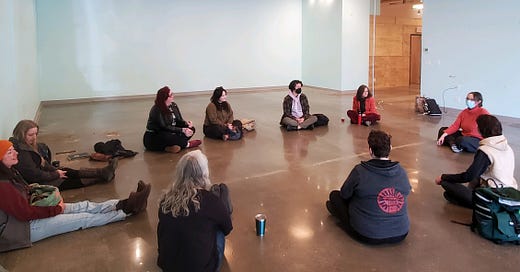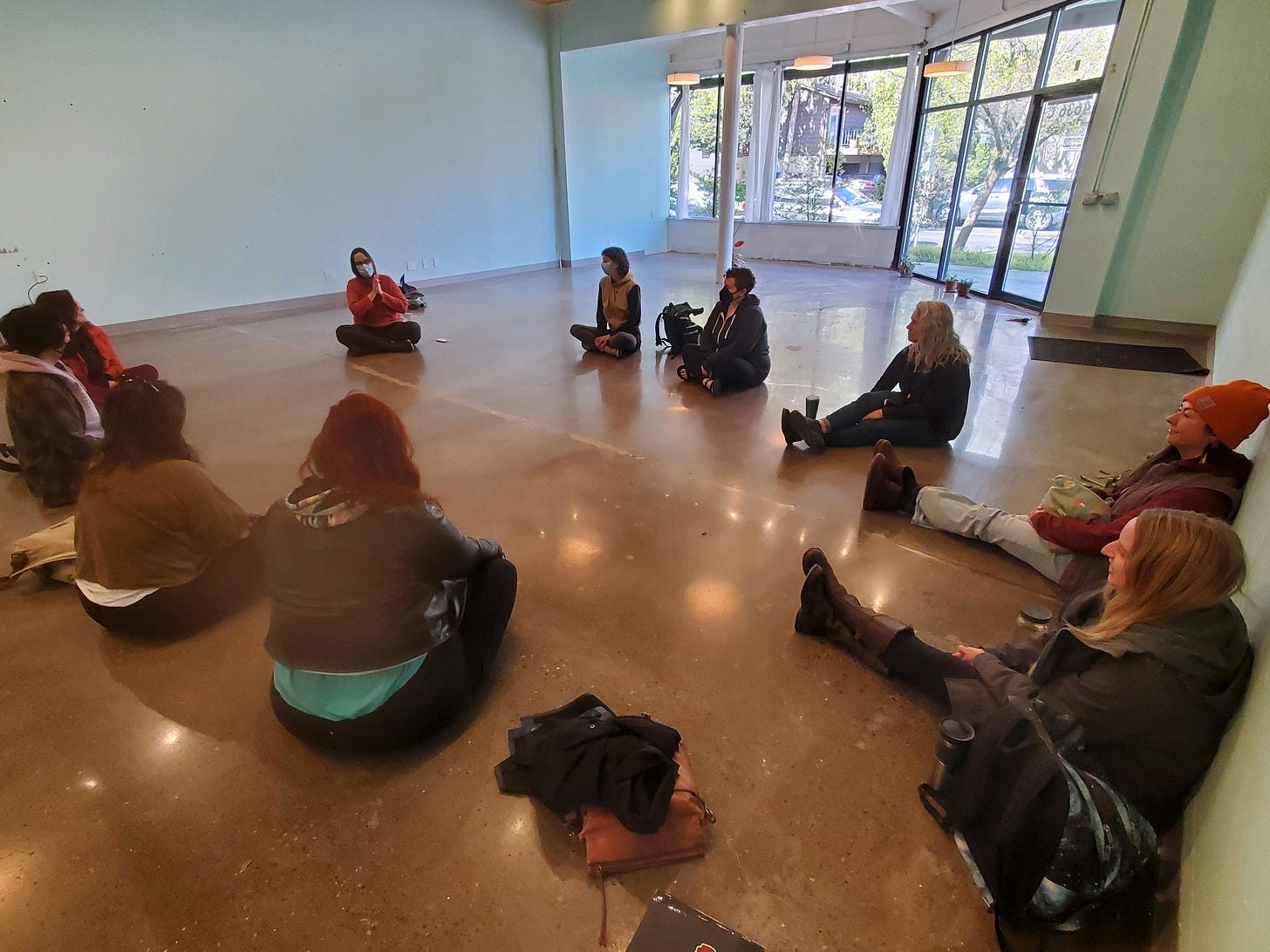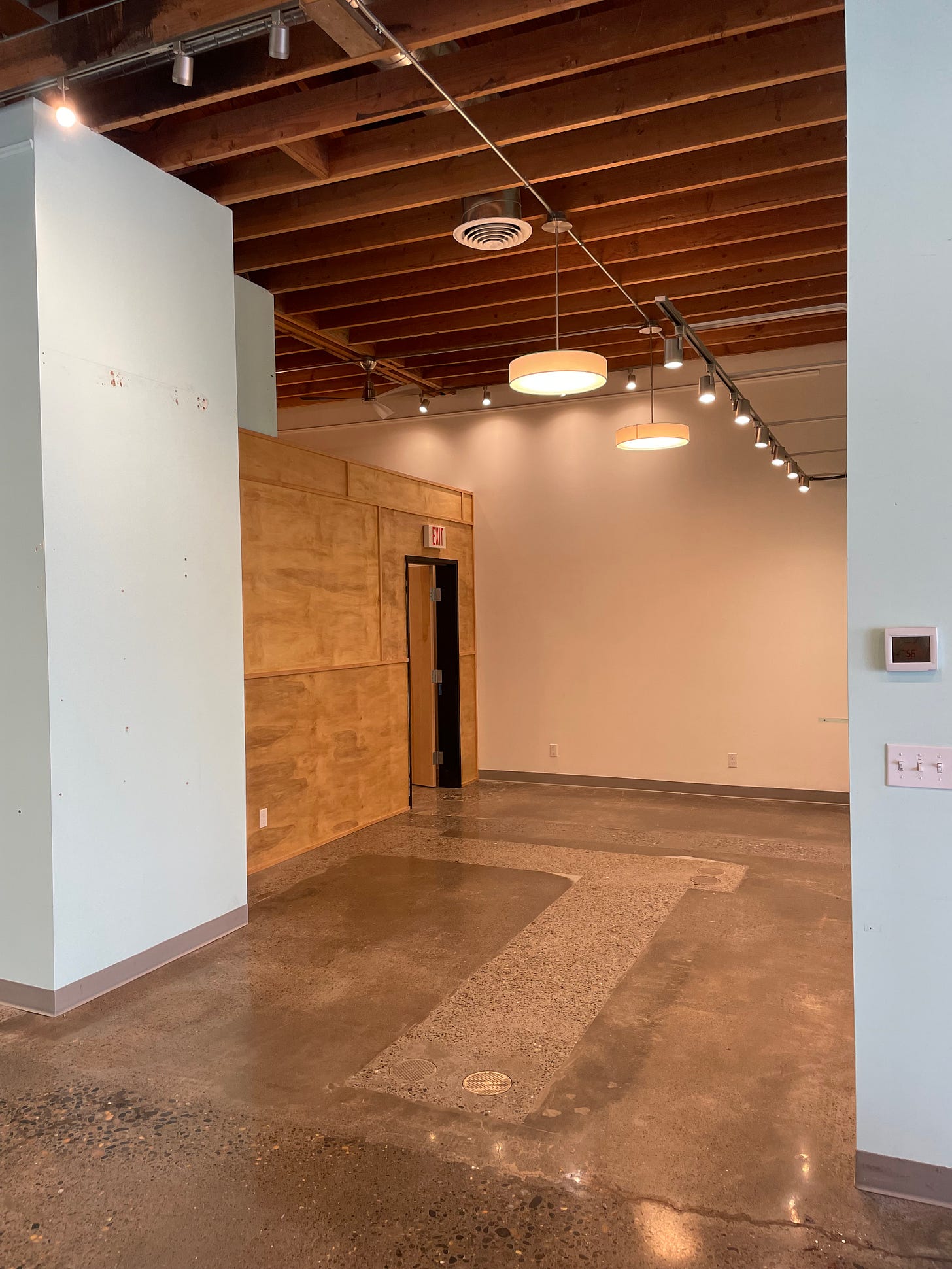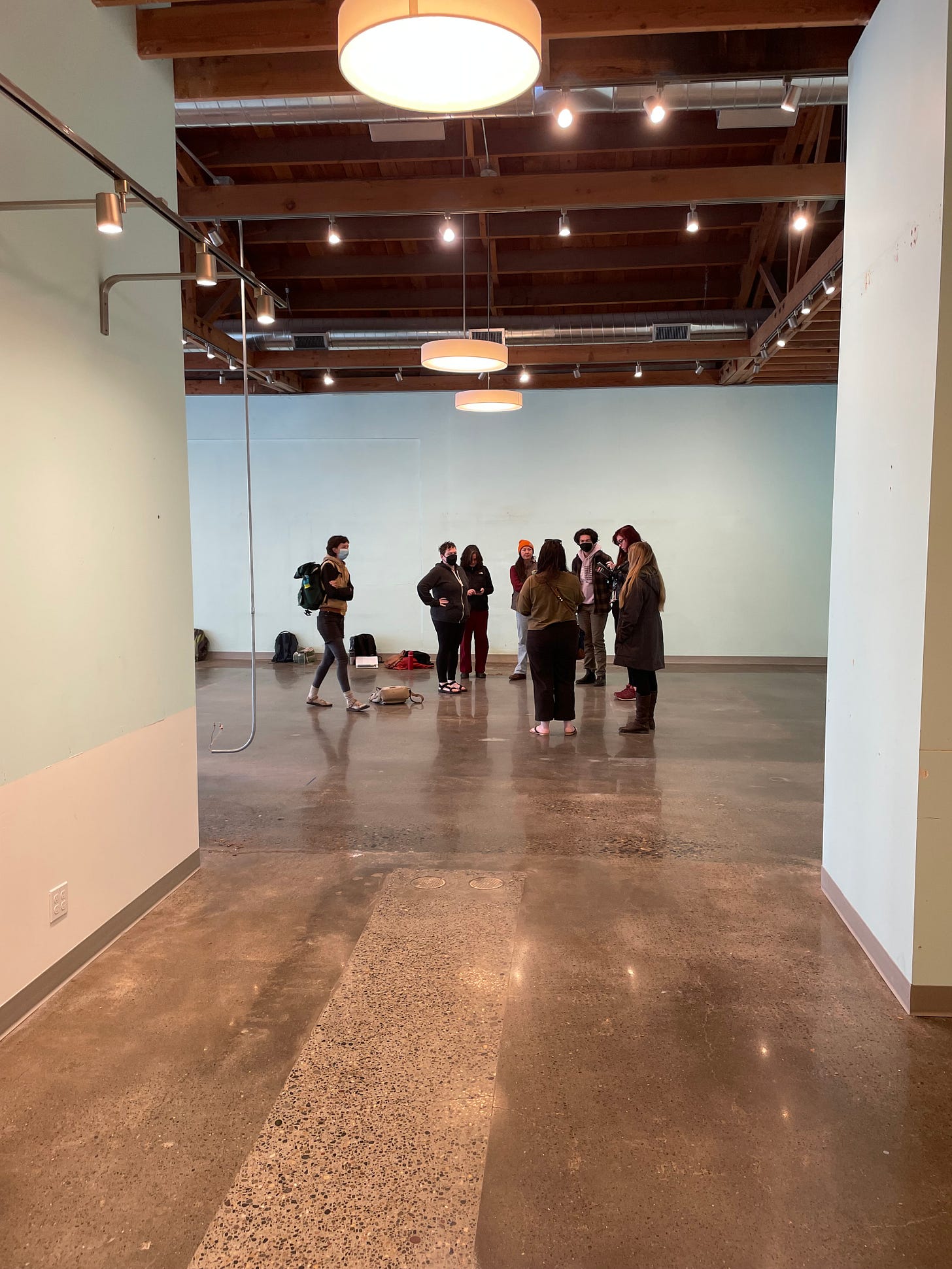Risk & Entrepreneurship & Acupuncture, Part One
Last Tuesday, POCA Tech’s third year class met in our newly-leased space on 42nd Ave. Our student government reps toured it as part of the process of making the decision to move the school, but most of the students hadn’t been inside before. We turned on the overhead lights, to a murmur of “wow” — the lights and the ceiling are much nicer than we’re used to. Then we sat down on the polished concrete floors and talked about risk.
I described how we figured out our timeline for moving and how we negotiated the lease, while the students asked questions about the process. A big part of navigating risk in business is determining your order of operations, and then revising it as needed. It’s something like creating a flow chart: where are we now? What’s the next small step? Move forward, yes or no? And repeat until you get where you want to go (or realize you need a new destination).
For example, we realized we needed to move in late October 2023 — but our rental agreement with the Rose City Collective runs through August 2024. We started looking, not very hard, for possible spaces. When we unexpectedly found our new space (on November 28th, 2023) it was empty, the landlord was actively looking for a tenant, and there was a chance our timing wouldn’t align with hers. A big question in negotiating a possible lease was when should it start? Which required figuring out when we could start doing tenant improvements, how long it would take and what we could afford, which depended on finding a contractor and getting a bid, which takes longer these days than it did pre-pandemic. Also we had an ice storm in January which wrecked everyone’s schedules. It took us from December to mid-April to get a lease that officially starts in July, with two months of tenant improvements scheduled for May and June. Then we asked the Rose City Collective to release us a month early, which they graciously did. This process is an example of navigating uncertainty that we want to share with students, as a way of trying to convey how it feels to be an entrepreneur.
Because you can’t prepare people for entrepreneurship by pretending that it isn’t scary.
Merriam-Webster defines risk as “possibility of loss or injury: peril” and also “the chance that an investment will lose value”. Some synonyms are: danger, hazard, trouble, exposure, vulnerability, gamble. At POCA Tech we often compare having a small business to riding a bicycle. You’re much more exposed and vulnerable to the elements that you would be if you were in a car, and you have to pay attention to every bump and pothole in the road.
It’s not possible to have a business without risk. And there’s an enormous difference between having a corporate job, or a government job, and owning a small business or working in someone else’s small business. Risk-you-can-feel is maybe the defining element. Developing a sane, balanced relationship with risk is something every entrepreneur needs to do, but there’s not nearly enough transparency about that.
I enrolled in acupuncture school 33 years ago, when I was 23, and on some level I’ve never gotten over my dismay that nobody said to me directly, “After you graduate, you will likely have to make your own job and that is extremely different than anything you’ve ever done before, or even imagined doing.” When I enrolled in acupuncture school, I was taking risks by investing my time, my energy, and my borrowed money into an uncertain future, but I didn’t understand that. And since I was a class straddler, it was a big deal for me to get a Master’s degree (and also for my family — my parents didn’t go to college). I couldn’t have conceived of the possibility that I might be signing up for a Master’s degree that I’d never actually use. Neither I nor my family could imagine that higher education might lead me nowhere, or someplace hazardous. I was way out of my depth.
Nobody explained to me that I was taking a risk by enrolling, OR that I’d have to take a lot more risks if I wanted to actually practice acupuncture after I graduated, AND that if all went well I would get to keep taking them for the rest of my career! I don’t know if that was a conscious omission or it was just something that nobody thought to bring up.
Recently the acupuncture profession in the US acquired a new meta-organization, The AHM Coalition. When the announcement dropped, I got a bunch of emails saying what is this??, and I sent a bunch of emails saying what is this??, but so far I haven’t heard any answers that make any sense — so I can’t actually tell you what this organization does, besides offer an example of things the acupuncture profession likes to talk about more than entrepreneurship and risk. Like “advancing professional standards”. Now that I work in an acupuncture school I get why we need standards, but I think acupuncturists sometimes focus on them at the expense of other urgent topics.
If you look at the organizations that make up The AHM Coalition, three out of four of them derive most of their income directly or indirectly from people entering the acupuncture profession, rather than from people making their living once they become L.Acs. The problem is that fewer and fewer people want to take the risk of doing that. We’re overdue for a conversation about how the acupuncture profession avoids certain risks by pushing them on to students (who don’t understand them!). I’m not optimistic that we’re going to have that conversation, though, because what passes for dialogue in the acupuncture profession is so disconnected from the vulnerable reality of small business that the people in charge can’t feel the risks we’re asking students to take.
In a sustainable model for acupuncture education, risk would be distributed much differently than it is now. If our society wants licensed acupuncturists, somebody’s going to have to figure out a better formula for turning them out than “student borrows $300,000 to get a doctoral degree so that they can qualify for a license that allows them to start their own small business that may net them less than $30,000 a year IF they ever practice at all”.1 In that formula, the relationship between the student and the larger community is “good luck out there!” So far we haven’t been able to collectively admit that this profession funds its infrastructure on students taking big, uninformed risks.
A different formula for making licensed acupuncturists is what POCA Tech is trying to work out, along with a different relationship between an acupuncture school and its community. That’s what the next ten years of POCA Tech are about, the ten years we committed to when we signed this lease. It’s a gamble, it’s a hazard, it’s a risk.
Stay tuned for Part Two, written by a Cohort 8 student.
Okay, I know somebody’s going to say: “But I know acupuncturists who are making $300,000 a year or even more!” Yes, those fortunate acupuncturists do exist, and good for them. But all the demographic data about acupuncture practice indicates a wide range of income and success, and for every acupuncturist who’s making good money, there’s at least one who’s making nothing. For more details, see pages 29 - 30 of the California Acupuncture Board’s Job Task Analysis. Spoiler: for every acupuncturist who said they’re making over $200K per year, almost five said they’re making less than $15K, and 40.6% said they didn’t feel they could earn a living wage (and of course those are just the people who responded, who still consider themselves acupuncturists, who haven’t given up altogether.) That’s what we mean by risk.







